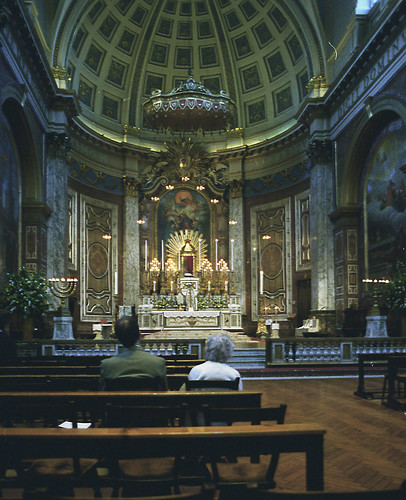The design of the London Oratory, seen here on the Feast of Corpus Christi, is what became standard after the Council of Trent. It is clear and logical both from an architectural and theological point of view. There is a linear progression from secular to sacred: nave, then sanctuary, marked by a change in level and altar rails, then further steps leading to the altar, then reredos with the tabernacle in a raised position in the centre, the whole surmounted by, and culminating in, the crucifix and three flanking candles on either side.
The sacredness of the sanctuary is further emphasised by a change in flooring materials and rules concerning who is permitted to be there and what clothing they should wear.
It would be difficult to think of an architectural form that could more clearly express Catholic theology. This architectural and ceremonial use of differences to present teachings of a profound nature, is, as Claude Lévi-Strauss explored in his development of structural anthropology, a common thread in all human societies. Neglect it at our peril.
The sacredness of the sanctuary is further emphasised by a change in flooring materials and rules concerning who is permitted to be there and what clothing they should wear.
It would be difficult to think of an architectural form that could more clearly express Catholic theology. This architectural and ceremonial use of differences to present teachings of a profound nature, is, as Claude Lévi-Strauss explored in his development of structural anthropology, a common thread in all human societies. Neglect it at our peril.

Kommentarer